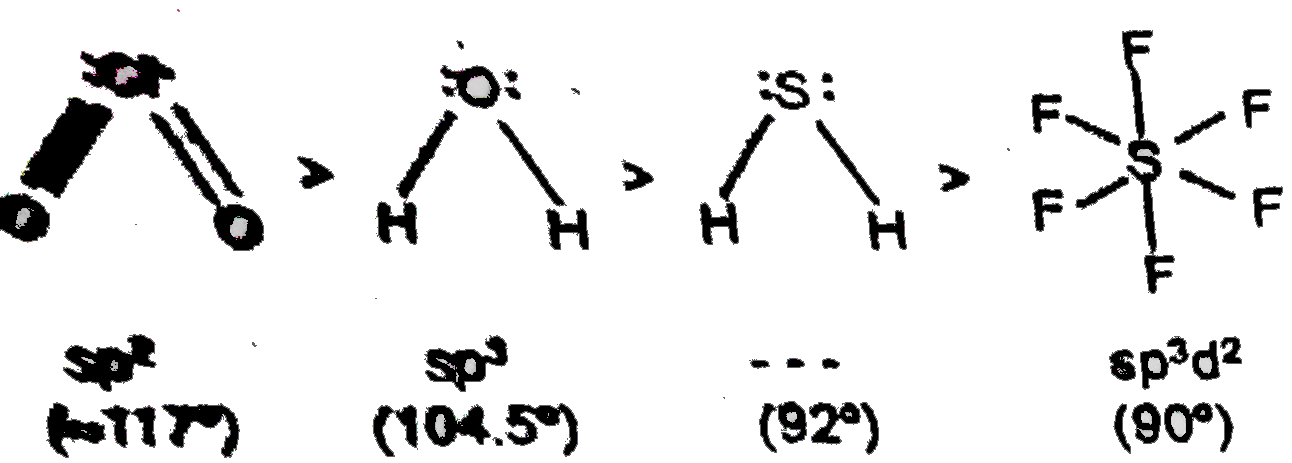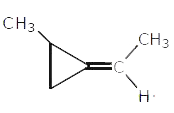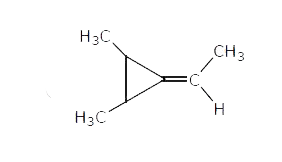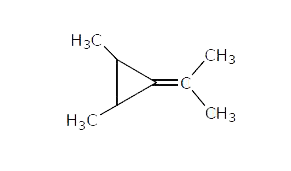Explore topic-wise InterviewSolutions in .
This section includes InterviewSolutions, each offering curated multiple-choice questions to sharpen your knowledge and support exam preparation. Choose a topic below to get started.
| 18801. |
The volume in ml of 0.1 N HCl required to react completely with 1.0 gm mixture of Na_(2)CO_(3)and NaHCO_(3) containing equimolar amounts of the two compounds is |
|
Answer» `157.9` ML |
|
| 18802. |
Value of Henry's constant K_(H) ………. . |
|
Answer» <P>increases with increase in TEMPERATURE |
|
| 18803. |
What happens when persistent dialysis of a colloidal solution is carried out? |
| Answer» Solution :The STABILITY of a colloidal sol is due to the presence of a small amount of the electrolyte. On PERSISTENT DIALYSIS, the electrolyte is completely removed. As a result, colloidal solution becomes UNSTABLE. Hence, it gets coagulated. | |
| 18804. |
Which of the following ordersof stability are correct - |
|
Answer» `CH_(3)OVERSET(oplus)(C)HOCH_(3)gtCH_(3)overset(oplus)(C)HCH_(2)OCH_(3)` |
|
| 18805. |
Which of the following is not globular protein? |
|
Answer» keratin |
|
| 18806. |
Which among the following statement are correct with regard to alkyl halides? |
|
Answer» Alkyl halides on heating with aq NaOH GIVES alcohols |
|
| 18807. |
Which alkali metal bicarbonates does not exist as solid ? |
|
Answer» `LiHCO_3` |
|
| 18808. |
Which one of the following compound has R configuration ? |
|
Answer» I |
|
| 18809. |
What are the products formed when methoxy ethane is treated with hydroiodic acid? |
|
Answer» Phenol+ iodomethane |
|
| 18810. |
The SOP, E^(@) for the half reactions are Zn to Zn^(2+) + 2e , E^(@) = + 0.76 V Ag to Ag^(+) + e , E^(@) = -0.77 V E^(@) of the cell , Ag^(+)+ Zn to Zn^(2+) + Ag is : |
|
Answer» `+ 1.53` |
|
| 18812. |
The reagent used for converting ethanoic acid to ethanol is |
|
Answer» `LiAlH_4` |
|
| 18813. |
The set of molecule having two different bond angles is 1. Cl_(3),2.XeF_(6),3.XeOF_(4),4.PCl_(5),5.BF_(3) |
|
Answer» `1,2,3,4` `XeOF_(4):90^(@),120^(@),PCl_(5):120^(@),90^(@)` |
|
| 18814. |
Which of the following oxoacids of halogen doesn't exist |
|
Answer» HOBrO |
|
| 18815. |
Which of the following ion has maximum Second ionisation enthalpy? |
|
Answer» `V^(+)` |
|
| 18816. |
Which of the following statements are correct about stability of chelates ? |
|
Answer» As the no. of rings in complex increases, stability of chelate also increases |
|
| 18817. |
What polymer is used in the manufacture of paints and lacquers ? |
| Answer» Answer :B | |
| 18819. |
Which of the following reagents converts both acetaldehyde and acetone to alkanes |
|
Answer» `Ni//H_(2)` |
|
| 18820. |
When 6 faraday electricity is pass through aqueous solution of silver nitrate, copper sulphate and gold chloride (AuCl_(3)), then what ratio of mole of metals obtained at cathode ? |
|
Answer» `1:1:1` `Ag^(+)+E^(-) to Ag` `therefore 6Ag^(+)+6e^(-) to 6Ag` (6 moles of Ag obtained by 6F) `CuSO_(4) to CU^(2+)+SO_(4)^(2-)` `Cu^(2+)+2E^(-) to Cu` `therefore 3Cu^(2+)+6e^(-) to 3Cu` (3 moles of Cu obtained by 6F) `AuCl_(3) to Au^(3+)+3CL^(-)` `Au^(3+)+3e^(-) to Au` `therefore 2Au^(3+)+6e^(-)to2Au` (2moles of Au obtained by 6F) So, mole reaction of Ag, Cu and Au metal is 6:3:2. |
|
| 18821. |
Which of the following reagents may be used to distinguish between phenol and benzoic acid |
|
Answer» AQUEOUS NaOH |
|
| 18822. |
Which of the following is used in the reduced sleepiness? |
|
Answer» CAFFEINE |
|
| 18823. |
Two liquids A and B form an ideal solution at temperature T. When the total vapour pressure above the solution is 400 torr, the mole fraction of A in the vapour phase is 0.40 and in the liquid phase 0.75. What are the vapour pressure of pure A and pure B at temperature T? |
|
Answer» |
|
| 18824. |
Which of the following will show optical isomerism as well as geometrical isomerism. |
|
Answer»
|
|
| 18825. |
Which is true for the following isomeric forms I & II respectively : |
|
Answer» `{:(IgtII,IgtII,IIgtI,IgtII):}` |
|
| 18827. |
what is DeltaE for a system that does 500 cal of work pm surrounding and 300 cal of heat is adsorbed by the system ? |
|
Answer» `-200 CAL ` |
|
| 18828. |
Which of the following is not an antipyretic ? |
|
Answer» Aspirin |
|
| 18829. |
Write the structure of perchloric acid (HCIO_4) |
Answer» SOLUTION :
|
|
| 18830. |
Which of the following statements is incorrect regarding benzyl chloride ? |
|
Answer» It gives WHITE precipitate with alcoholic `AgNO_(3)` |
|
| 18831. |
Which one of the following is used to cure headache, muscle strain, arthritis? |
|
Answer» ACETAMINOPHEN |
|
| 18832. |
Valence shell electron pair repulsion theory (VSEPR) provides a method for predicting the shape of molecules, based on the electron pair electrostatic repulsion.According to VSEPR model, molecules adopt geometries in which their valence electron pairs position themselves as far from each other as possible.The VSEPR model consider double and triple bonds to have slightly greater repulsive effects than single bonds because of the repulsive effect of pi electrons.how ever, the lone pair creates the maximum repulsive effect. Which of the following does not represent the isostructural pair ? |
|
Answer» `SF_5^-` and `IF_5` |
|
| 18833. |
Valence shell electron pair repulsion theory (VSEPR) provides a method for predicting the shape of molecules, based on the electron pair electrostatic repulsion.According to VSEPR model, molecules adopt geometries in which their valence electron pairs position themselves as far from each other as possible.The VSEPR model consider double and triple bonds to have slightly greater repulsive effects than single bonds because of the repulsive effect of pi electrons.how ever, the lone pair creates the maximum repulsive effect. Incorrect order about bond angles is : |
|
Answer» `H_2OgtH_2SgtH_2SegtH_2Te` (B)`C_2H_2 gtC_2H_4 gt CH_4 gt NH_3`.In `NH_3` there is bp-lp repulsion so bond angle decreases to `107^@` from `109.5^@` `{:(SP,sp^2,sp^3,sp^3),(180^@,120^@,109.5^@,107^@):}` ( C)The correct order is `{:(SF_6lt,OF_2lt,H_2Olt,NH_3),(90^@,102^@,104.5^@,107^@):}` (D)`CIO_2 gt H_2O gtH_2S gtSF_6`  `{:(sp^2,sp^3,---,sp^3d^2),(~~117^@,104.5^@,92^@,90^@):}` |
|
| 18834. |
What is the difference between coformation and configuration in open chain molecules? |
|
Answer» Solution :Stereo isomers are of two types : 1) Configurational iomers 2) Conformational isomers. Difference : Configurational isomers possess certain types of rigidity in the molecules. These molecules can be interconverted only by bond breaking and reforming new bods. Conformation can be easily interconverted by simply rotating about `C-C` sigma bonds. Explanation: Configurational isomers are oftwo types : A) GEOMETRICAL isomers and B) Option isomers. A) Geometrical isomers : This is due to hte difference in the spatial ARRANGEMENT of groups about teh doubly bonded carbon atoms in the molecules. EXx : Cis - 2- Butene and Trans -2- Butene  B) Optical isomers : This is due to the diffent spatial arrangements of FOUR different atoms or RADICALS in the MOLECULE. Ex : `(+)` Lactc acid (1) and `(-)` Lactic acid (2)  Conformations: As a result or rotation about single `C-C` bond, the atoms or groups of a molecule assume different spatial arrangements. These different atomic arrangements are called 'conformations.'` Ex : Eclipsed (E) and staggered (S) conformations of ethane. 
|
|
| 18835. |
Which of the following is a mixed acid anhydride ? |
|
Answer» NO |
|
| 18836. |
Which of the following statement(s) is (are) con-ect ? |
|
Answer» `HgCl_(2)` dissoloves in HOT water |
|
| 18837. |
When a radioactive substance is subjected to vacuum, the rate of disintegration per second |
|
Answer» INCREASES considerably |
|
| 18838. |
What is basic difference between calcination and roasting? |
| Answer» Solution :During calcination, the concentrated ore is HEATED either in the ABSENCE or in the limited supply of air. On the other HAND, roasting is carried out in EXCESS of air. | |
| 18839. |
What is the free energy change for (a) galvanic cell (b) electrolytic cell? |
| Answer» Solution :(a) `DeltaG lt 0` (as REDOX REACTION is spontaneous) (b) `DeltaG GT0` (as redox reaction is non-spontaneous). | |
| 18840. |
Which of the following decarboxylates most easily:- |
|
Answer» `Ph-CH_(2)-COOH` 
|
|
| 18841. |
Which of the following statements is INCORRECT about Werner's theory ? |
|
Answer» Primary valence is the same THING as oxidation state. |
|
| 18842. |
Which one of the following is used to get propan-2-ol by the reaction with CH_3MgBr? |
|
Answer» ETHANOL |
|
| 18843. |
Which of the following mixtures can be separated by using an NH_(3) solution? |
|
Answer» `FE^(3+)` and `Al^(3+)` |
|
| 18844. |
Which of the following is an ore of calcium ? |
|
Answer» EPSOM salt |
|
| 18845. |
What are essential amino acids?Is glycine an essential amino acid ? |
| Answer» Solution :Amino acids which the body cannot SYNTHESIZE are called essentiaI amino acids. For EXAMPLE, phenylalar valine, teucine ETC. THEREFORE, these MUST be supplied in diet. | |
| 18846. |
Which of the following Colloid possesses positive charge ? |
| Answer» Solution :`Fe(OH)_(3)` | |
| 18847. |
Write the formula and IUPAC name of aspirin. Why it should not be taken on empty stomach ? |
Answer» Solution : It generates salicylic acid on hydrolysis. THEREFORE, it should not be TAKEN on empty STOMACH. |
|
| 18848. |
Which of the following statements regarding an optically active halide is correct |
|
Answer» `SN^2`REACTION gives a racemic mixture |
|
| 18849. |
Which of the following is not correct for D_(2)O |
|
Answer» BOILING POINT is HIGHER than `H_(2)O` |
|
| 18850. |
Which is a tertiary alkyl halide in the following? Explain with reasons. (a) CH_(3)-(CH_(2))_(2)-CHCl-CH_(3) (b) (CH_(3))_(3)CI (c) CH_(3)-CH_(2)-"CCl"_(2)-CH_(3) (d) (CH_(3))_(3)C-CHBr_(2) |
| Answer» Solution :(b) `(CH_(3))_(3)CI` is a tertiary alkyl halide, `[{:(""CH_(3)),("|"),(CH_(3)-C-I),("|"),(""CH_(3)):}]` since I is attached to a tertiary CARBON atom which is attached to THREE carbon atoms. | |







